The NVIDIA GeForce GTX 970 Review: Featuring EVGA
by Ryan Smith on September 26, 2014 10:00 AM ESTOverclocking
With GTX 980 we saw first-hand how GM204 had very significant overclocking headroom. Even without the ability to meaningful overvolt on NVIDIA cards, we were able to push our base GPU clock speed up from 1126MHz to 1377MHz, or in terms of the maximum boost bin, from 1265MHz to 1515MHz. Consequently with GTX 970 shipping at lower clock speeds, we have very lofty expectations here.
But running counter to that will be TDP. As we have already seen, GTX 970 is TDP limited right out of the gate, so even if our card has more clock speed headroom, its 110% TDP limit doesn’t leave much more in the way of power headroom. Furthermore as this is already a factory overclocked card, there’s no guarantee that EVGA has left us much overclocking headroom to play with in the first place.
| EVGA GeForce GTX 970 FTW Overclocking | ||||
| FTW | Overclocked | |||
| Core Clock | 1216MHz | 1241MHz | ||
| Boost Clock | 1367MHz | 1392MHz | ||
| Max Boost Clock | 1418MHz | 1455MHz | ||
| Memory Clock | 7GHz | 7.8GHz | ||
| Max Voltage | 1.218v | 1.243v | ||
And in fact our results show they haven’t. We aren’t able to get even another 50MHz out of our GPU before errors start setting in; 25MHz is all we will get, which pushes our base GPU clock speed from 1216MHz to 1241MHz, and our maximum boost clock from 1418MHz to 1455MHz. Overall this is a weaker overclock than GTX 980, though not immensely so.
Meanwhile memory overclocking was just as fruitful as it was on GTX 980, with our card being able to handle up to 7.8GHz on its GDDR5 memory. As we saw with GTX 980 we’re nearly as memory bandwidth bottlenecked as we are GPU bottlenecked, but we will take what performance we can get.
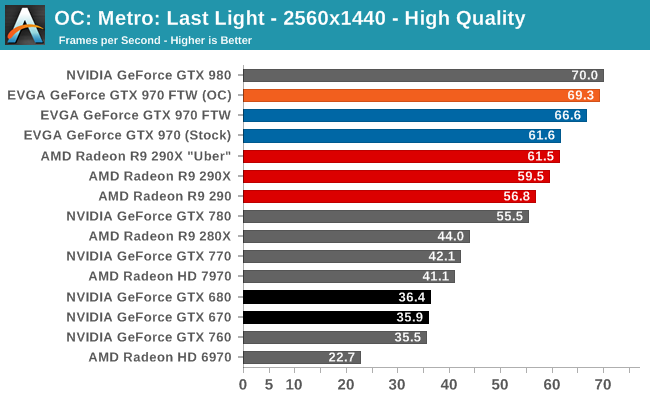
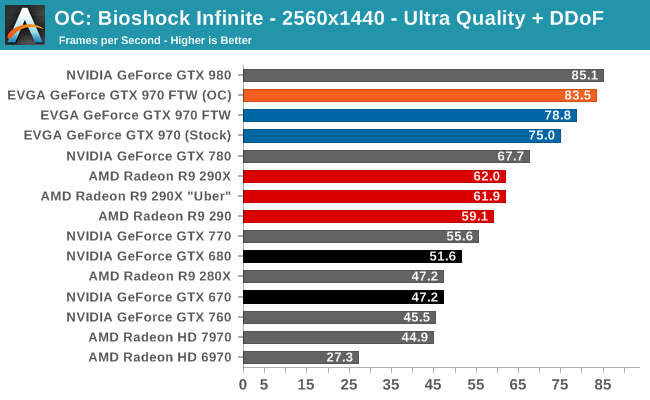
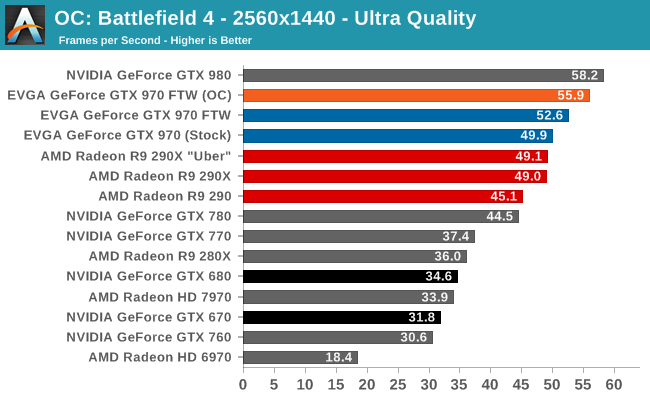

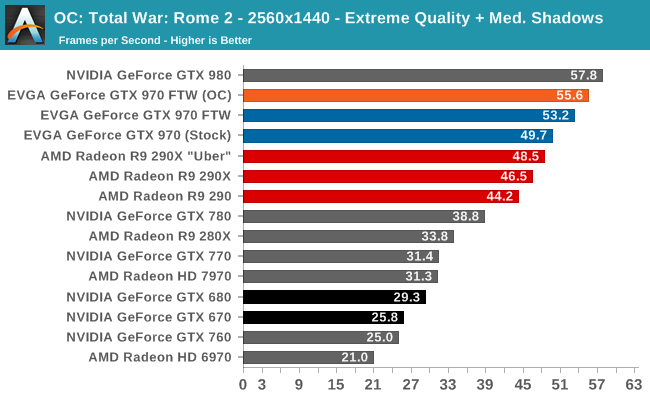
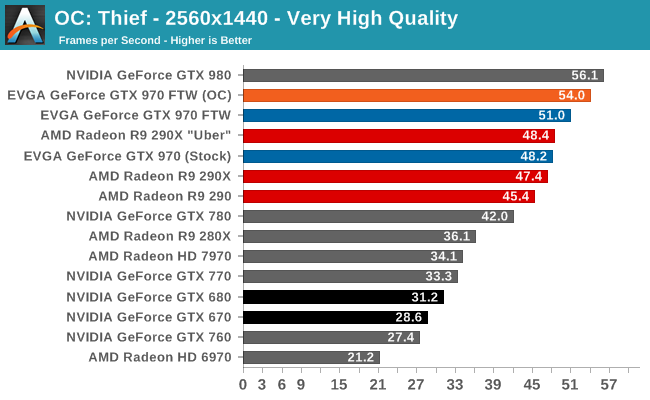
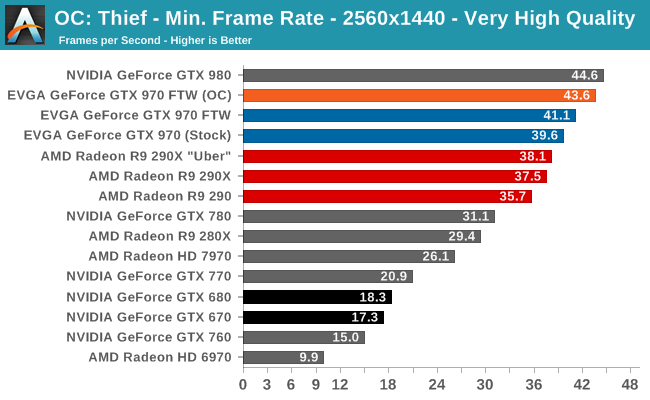
As you’d expect from such a mild overclock, the performance increase is very limited. Our overclocked GTX 970 FTW does close on GTX 980 even more, but even with this full overclock it won’t overcome the 3 SMM deficit.
Overall in all likelihood the GTX 970 FTW benefits more from the 10% increase in TDP than it does the clock speed increase. GTX 970 – and GM204 in general – clearly desires to be fed with more voltage and more power overall than what any NVIDIA approved card is going to see.
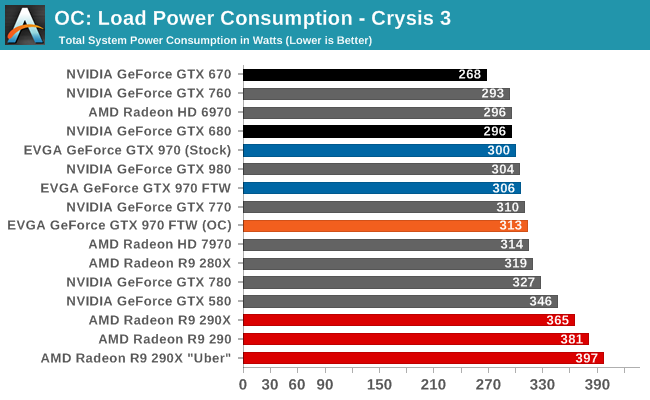
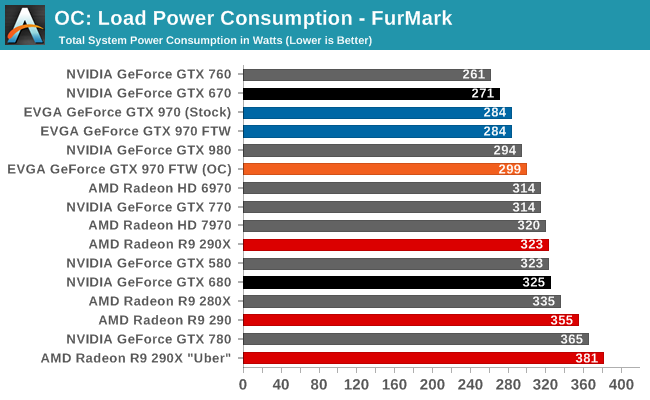
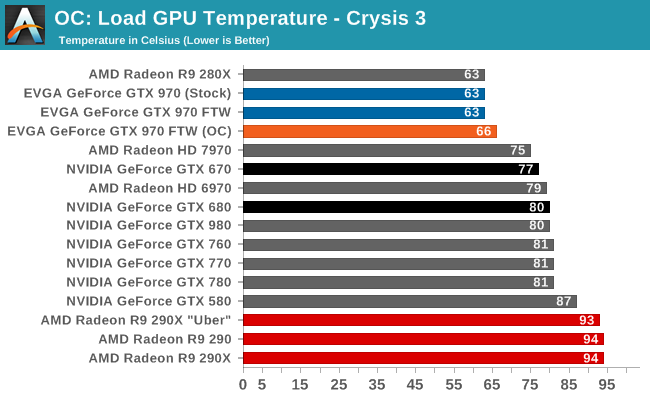
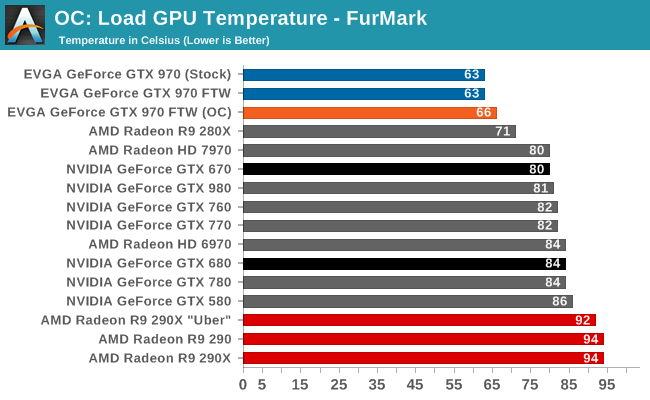
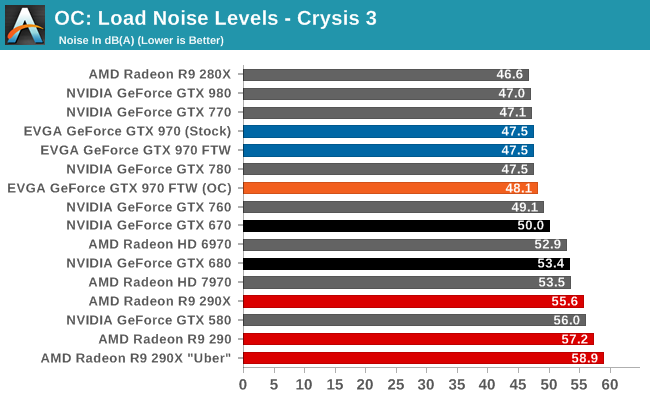
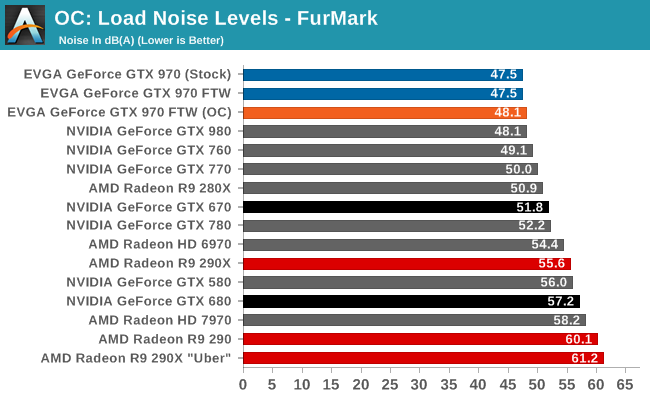
Power consumption and noise tick up, but only slightly. The limited 10% TDP increase means that the amount of power the card can draw and dissipate as heat only increases slightly. You aren’t getting much more performance, but you also aren’t getting much more noise.










155 Comments
View All Comments
AkibWasi - Saturday, September 27, 2014 - link
ain't those 896(64 per SMM) yellow colored boxes in Titan's diagram indicate FP64 cores ???Ryan Smith - Saturday, September 27, 2014 - link
Correct. NVIDIA only includes those cores on diagrams for their compute/pro GPUs.dexgen - Friday, September 26, 2014 - link
I think it would be a great idea to comment on and analyze the effects of overclocking (extra OC through AB or PX) when even the non overclocked settings end up getting throttled.For me, the most important thing about overclocking when the card is factory overclocked already is how much the throttling changes when the power target is increased. Any comments, Mr. Smith?
Ryan Smith - Friday, September 26, 2014 - link
Increasing the power target helps, but it does not fully alleviate the issue. A 10% increase just isn't enough to eliminate all TDP throttling, thanks in big part to the fact that power consumption grows with the square of the voltage. GM204 would ideally like quite a bit of power to sustain a heavy workload at 1.243v. Which is why that's officially in boost territory, as NVIDIA only intends that voltage/bin to be sustained in light workloads.Alexvrb - Saturday, September 27, 2014 - link
Wow I figured that the 970 would run into far less issues sustaining max boost than the 980. But I guess it is drawing nearly as much power. I don't want to see anyone complaining about AMD cards and boost anymore, heh.Anyway, the 970 still provides the absolute best bang for the buck and I'm stunned they didn't price it at $400. It's fast, reasonably priced, runs cool and quiet. It also is easy on power requirements, though I always overbuy on PSU anyway for headroom. Easy recommendation for anyone buying in the this price range!
AnnonymousCoward - Saturday, September 27, 2014 - link
Square of voltage, what are you smoking? P = IV = I^2 R = V^2 /R. The IC isn't a resistor. Typically current stays close to the same as you increase supply voltage.Ryan Smith - Saturday, September 27, 2014 - link
The formula for dynamic power consumption:P = C * V^2 * f
Where C is capacitance, f is frequency, and V is voltage. Those high boost bins are very expensive from a power standpoint.
AnnonymousCoward - Sunday, September 28, 2014 - link
You're right, thanks! Thinking about it, dynamic power increases by the square, and static is by a direct proportion, so total should be between the two. Dynamic probably dominates so it's probably much closer to the square.Footman36 - Friday, September 26, 2014 - link
What really bothers me is that EVGA is getting lazy, reusing older pcb's. This one looks like a 760... The VRM and phases look very primitive next to a card like the Asus Strix GTX 970. There was a time when EVGA used to wow me with custom designs, the last few years not so much as they invariably use reference boards. the issue I have with most of the reference boards is that coil buzz is noticeable. The Asus and MSI boards are using custom digital VRM's and super alloy caps....Anyhow, nice review.
Iketh - Monday, September 29, 2014 - link
i'm sure it has to do with their big heat sink design + bracing so the card doesn't flex